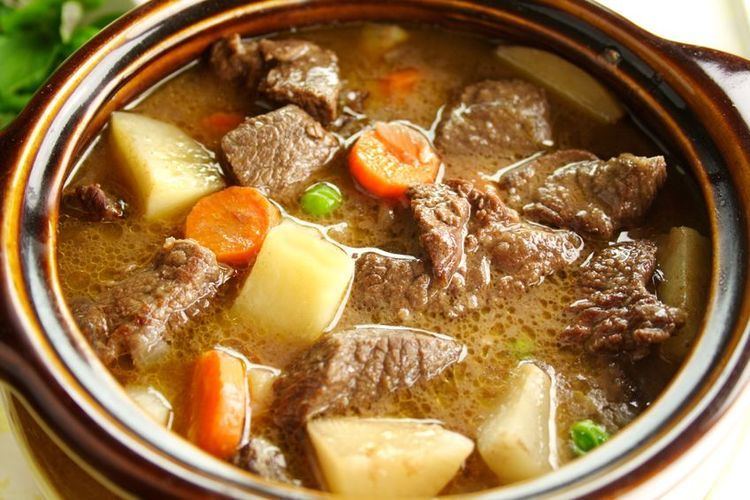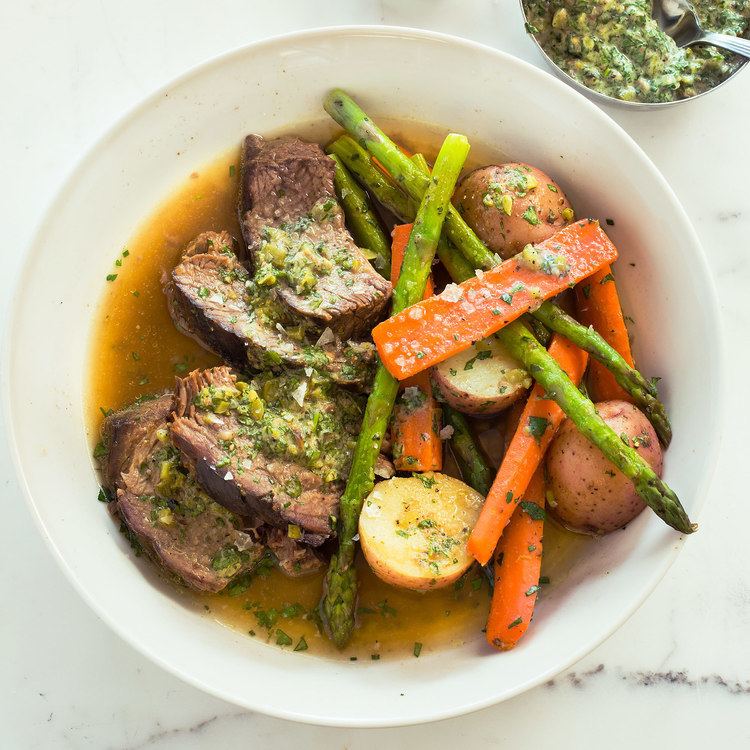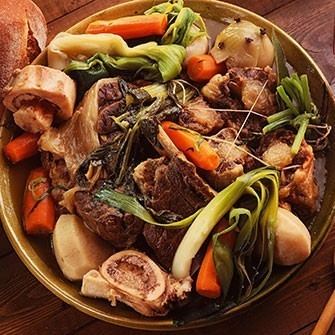 | ||
Main ingredients Beef, vegetables (carrots, turnips, leeks, celery, onions), cartilaginous meat (oxtail, marrowbone) Similar Consommé, Minestrone, Bouquet garni, Gratin, Bouillabaisse | ||
Classic french pot au feu beef stew unseen video
Pot-au-feu ([pɔ.to.fø] "pot on the fire") is a French beef stew. According to the chef Raymond Blanc, pot-au-feu is "the quintessence of French family cuisine, it is the most celebrated dish in France. It honours the tables of the rich and poor alike."
Contents
- Classic french pot au feu beef stew unseen video
- Origin and history
- Main ingredients
- Serving
- Variants
- References

Origin and history

It is difficult to know when the name pot-au-feu first appeared and when its meaning changed to describe the dish instead of the pot in which it is cooked. While pot was used to describe the rounded pot to cook on the fire at least since the 11th century (even in English), there seems to be no written trace of pot-au-feu until 1673.

In 1600, King Henry IV of France (1553-1610) declared, "I want no peasant in my kingdom to be so poor that he cannot have a poule au pot on Sundays." Poule au pot literally means "chicken in the pot" and the so-called traditional recipe resembles the one of "pot-au-feu". However, peasants' food was mainly based on bread (c. 500 g/day), root vegetables, in-season vegetables and soup. They rarely ate meat except salted pork, hog-grease, bacon, or other meat for religious celebrations (or when they dared illegally hunting on their Lord's land). For people in town, it was easier to buy inexpensive pieces of meat, which needed long cooking.

The method of cooking all food together and for extended periods of time (the whole day sometimes) gave what was called a "pot-pourri" in French and imported into English in the early 17th century. The relation between pot-pourri and pot-au-feu was attested in 1829 in the Etymologic dictionary of the French language: "Pot pourri. The name our fathers gave to the pot-au-feu".
Main ingredients
The cuts of beef and the vegetables involved vary, but a typical pot-au-feu contains:

Cooking cartilaginous meat in the stew will result in gelatin being dissolved into the broth. If the stew is allowed to cool, the broth may turn into a jelly, resulting in an interesting texture. Allowing the stew to cool also allows the removal of excess fat, which floats on the surface and solidifies. In order to give the broth a slightly smoked taste and its typical brown color, onions are cut in half then charred in a frying pan protected by aluminum foil until the onion's surface is completely black. The cloves are driven into the onions so that both onions and cloves can be removed easily before serving.
Serving

Traditionally, the broth is served first with a bit of nutmeg and the marrow (if a marrowbone was used) spread on toasted bread. Then the meat and the vegetables are served with coarse salt and strong Dijon mustard, horseradish sauce, and sometimes also with gherkins pickled in vinegar.
Pot-au-feu broth may also be used as a soup (often enriched with rice, pasta or toasted bread), as a base for sauces, or for cooking vegetables or pasta. Ready-to-use concentrated cubes are available to make what purports to be pot-au-feu broth when water is added.
Variants
Many countries have similar dishes with local ingredients. Even within France, ingredients may differ from one region to another and with the season.
